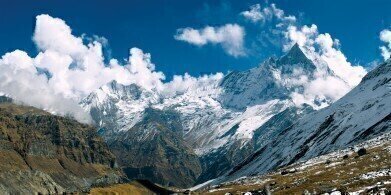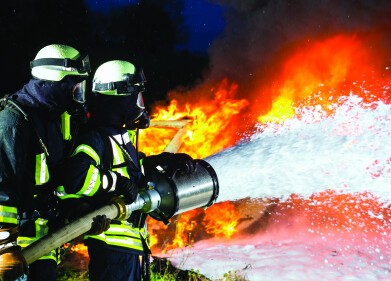Health & Safety
Nepalese Earthquakes Cause Increased Risk of Landslides and Flooding
May 22 2015
The two earthquakes which have devastated the country of Nepal over the last month might hold even farther-reaching consequences for its people in the upcoming months. The larger quake, back on April 25th, claimed the lives of 8,000 people and destroyed the homes of hundreds of thousands of others.
It also caused serious landslides and these were exacerbated last week by the second tremor, which led to many more. With so much displaced land entering into streams and reservoirs, and the monsoon season set to hit imminently, it’s thought that the rubble may cause the waters to break their banks and flood nearby towns and villages.
Predictive Forecasting “Urgent to Start Now”
The unique climate and terrain of many parts of Asia have led to weather monitoring and forecasting in order to save lives for many years. Champions of the practice such as Gary Noakes have been calling for a more concerted effort to predict disasters and take evasive action, especially since such disasters seem to have become more prevalent with the growing threat of climate change.
Even before these latest catastrophic earthquakes in Nepal, incidences of landslides and flooding were on the rise in the country. This was largely due to changing weather patterns – which some people have blamed upon global warming and its effects on our environment. Indeed, the chairman of Disaster Preparedness Network Nepal Bishal Nath Upreti has claimed that his independent action group have been calling on the government to take the matter more seriously for some time, but with little success.
“It’s very hard to convince the government. They didn’t think it was so important,” explained Upreti. “It’s urgent to start now.”
Evacuation of Danger Zones Imminent
Perhaps too late, the government has been shocked into action because of the recent seismic tragedies. Scientists have been scrambling to locate the areas most at risk to flooding due to landslides blocking the flow of water in rivers and streams.
One such body submitted a report to the government last week, citing six particular landslides which had caused blockages subsequent to the April 25th earthquake. The report, compiled by the International Centre for Integrated Mountain Development (ICIMOD), pinpointed five sites in Nepal and one in Tibet which are thought to be at extreme risk when the monsoon season starts early next month.
The next big challenge will be working out if there are other sites which require immediate attention – and more importantly, where the evacuees can be sent. As things stand, there is not a plan of action in place to find homes and refuge for the hundreds of thousands left destitute by the disasters. The government must act quickly if it is going to be able to save the lives of its people.
Digital Edition
IET 34.2 March 2024
April 2024
Gas Detection - Biogas batch fermentation system for laboratory use with automatic gas analysis in real time Water/Wastewater - Upcycling sensors for sustainable nature management - Prist...
View all digital editions
Events
Apr 22 2024 Hannover, Germany
Apr 22 2024 Marrakech, Morroco
Apr 23 2024 Kuala Lumpur, Malaysia
Apr 23 2024 Kintex, South Korea
Apr 23 2024 Edmonton, AB, Canada


















